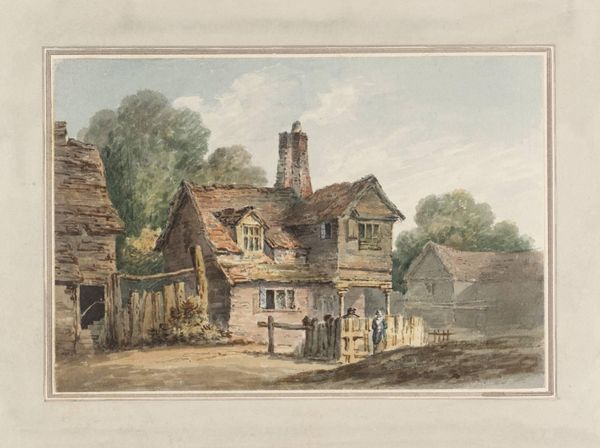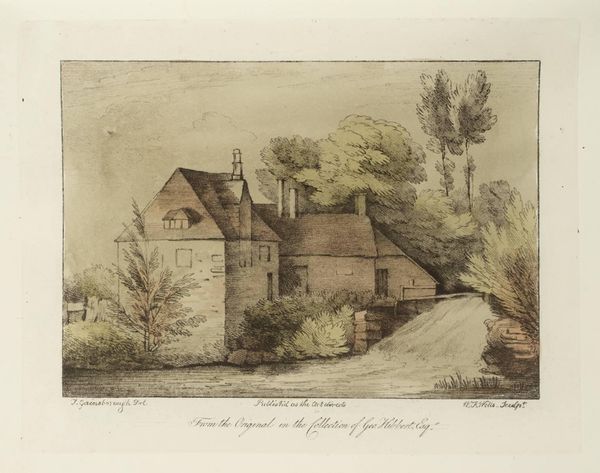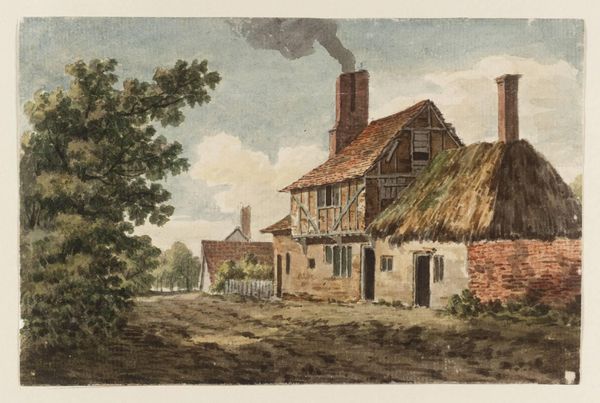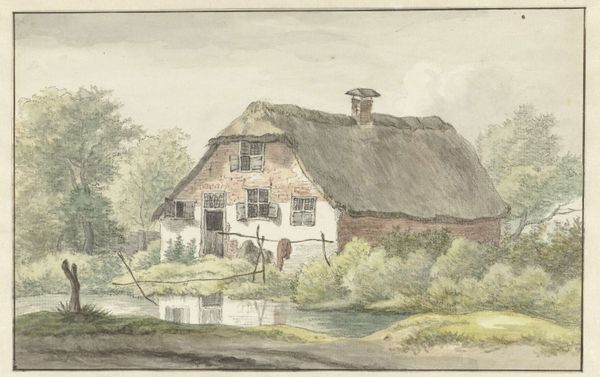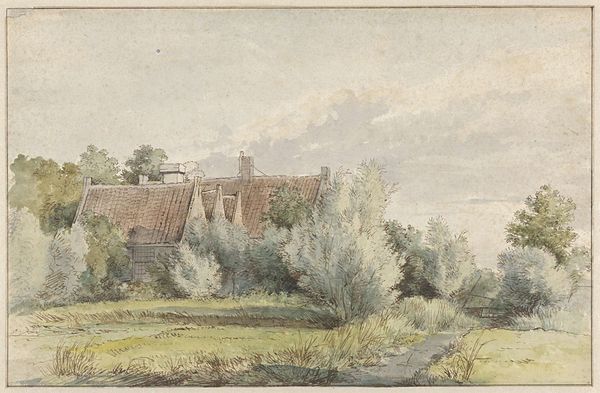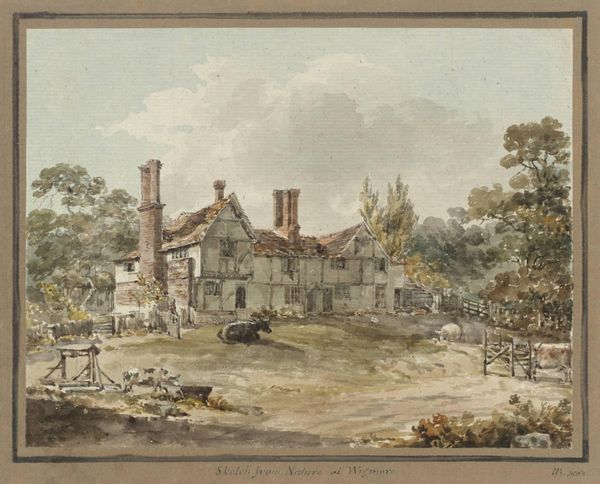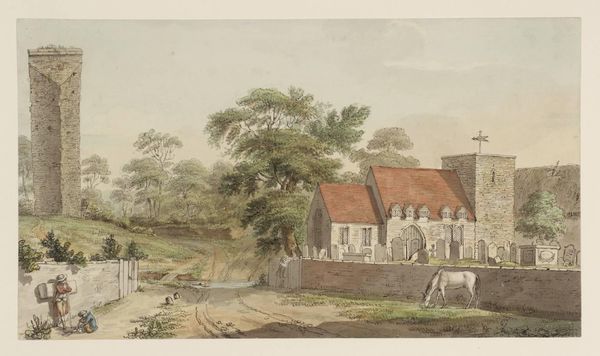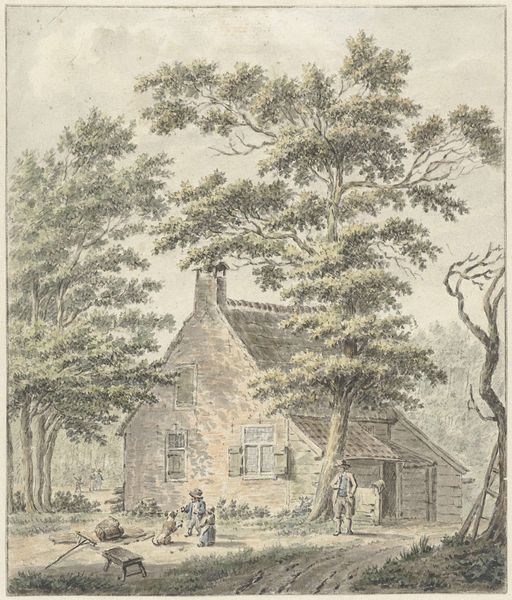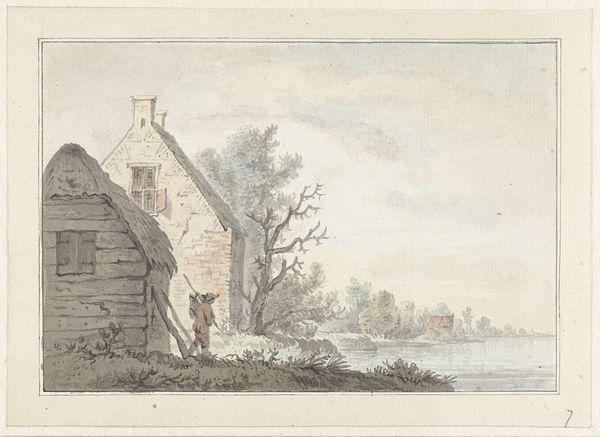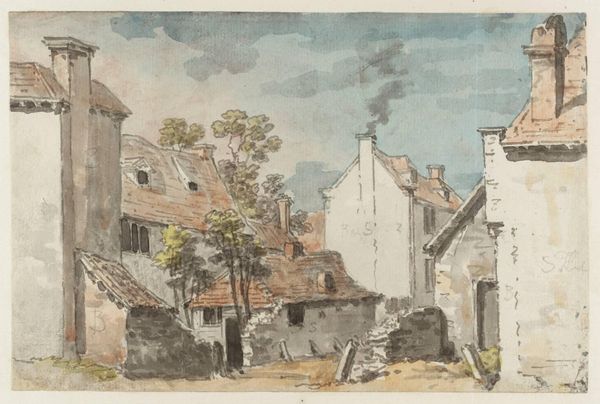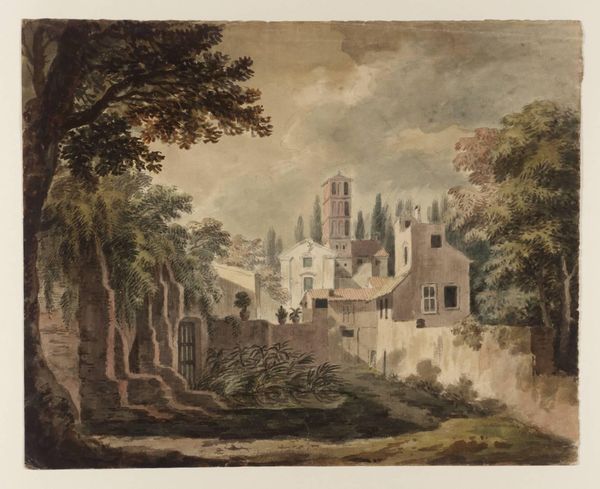
Dimensions: support: 148 x 222 mm
Copyright: CC-BY-NC-ND 4.0 DEED, Photo: Tate
Editor: This is "A Farmstead" by Jonathan Skelton. It's a watercolor piece. I'm struck by how the artist uses light to create depth, especially in the reflection on the water. What stands out to you in terms of its formal elements? Curator: The composition immediately arrests the eye, doesn't it? Skelton’s manipulation of form, particularly the geometrical arrangement of the buildings against the organic foliage, creates a compelling tension. Note also the delicate application of pigment. How does it contribute to the overall structure? Editor: The way the colors blend, it feels so serene. Thank you! Curator: Precisely. It’s the structural interplay of color and form that elevates this study beyond a mere pastoral scene. The reduction to essentials highlights a sophisticated understanding of pictorial architecture.
Comments
tate 8 months ago
⋮
http://www.tate.org.uk/art/artworks/skelton-a-farmstead-verso-standing-figure-t08473
Join the conversation
Join millions of artists and users on Artera today and experience the ultimate creative platform.
tate 8 months ago
⋮
Before his departure for Italy late in 1757, Skelton seems to have been a servant in the household of Thomas Herring, the Archbishop of Canterbury. Certainly, the locations depicted in many of his earlier watercolours correspond with the Archbishop's residences - at Lambeth Palace in London, at Rochester on the Medway where he retained the deanery, and at Croydon Palace in Surrey. The exact whereabouts of this view has not been identified. It is very close in handling to the work of the British landscape painter George Lambert, especially in the treatment of foliage. It is possible that Skelton was a pupil of Lambert's, as he makes several references in his correspondence from Italy to a 'Mr Lambert'. Gallery label, September 2004
